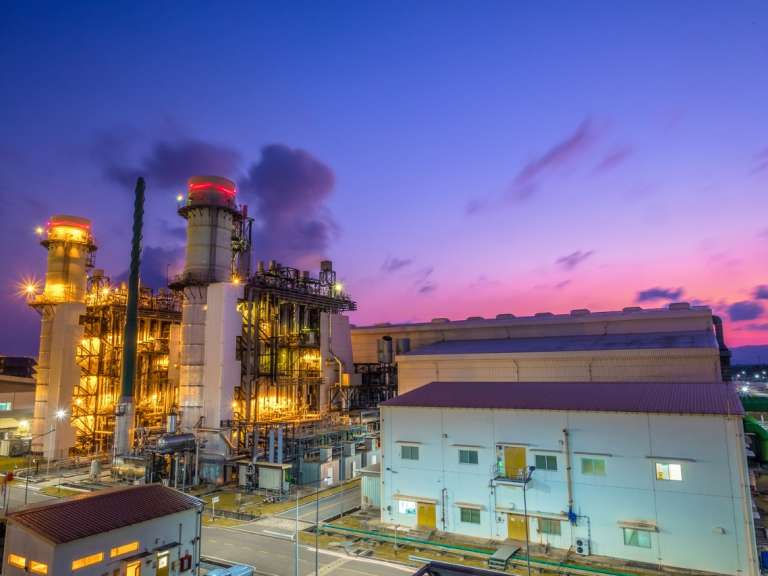Evolution of Combined Cycle Performance: From Baseload to Backup
Jeremy BowdenThe evolution of combined cycle performance prizes flexibility over efficiency in a renewables-focused market.

The evolution of combined cycle performance is dictated by the market. Over the past 10 years, intermittent renewable capacity has expanded dramatically, having a major impact on markets, which has meant that combined cycle gas turbines (CCGTs) have had to change the way they operate. Whereas in the past CCGTs were normally run for lengthy periods of time as baseload power, they must now respond rapidly to variations in renewable supply and demand, requiring a more flexible, cyclic pattern of use.
This eats into the load and running time of conventional plants, creating a challenging environment for CCGT generation. Nowhere is this more striking than in Europe, where a number of CCGT plants have closed. This includes Eon's Irsching CCGT plant in southern Germany, despite the fact that it was the world's most efficient power plant at the time with a 60.8 percent rating, according to Forbes. The plant was designed for baseload use, and its high combustion temperature and pressures did not allow efficient operation in conjunction with intermittent renewable flows.
Operators are now demanding CCGTs that are better designed for flexible or cyclic running, allowing for efficient and frequent start-ups, with the agility to ramp both up and down rapidly. To keep up with this market demand, turbine suppliers have had to innovate, propelled by the high levels of competition between companies for market share. Now, more flexible CCGT fleet operators must chase the gaps in the solar and wind load curves, with scale and low gas prices keeping gas-fired CCGT plants competitive in the United States and many other places, particularly against coal, which also has longer start-up times.
The evolution of combined cycle performance has led to a seismic change in the way gas turbines are designed and maintained. Ten to twenty years ago, the objective of improvements in turbine design was almost exclusively to push the limits of energy conversion efficiency. That is still an objective, but now designers pay more attention to speed of start-up and flexibility.
At the same time, turbine manufacturers and other specialists have introduced innovative ways to make existing gas and steam turbines, in their combined cycle setups, respond better to the changing market conditions. This has changed the nature of the combined cycle fleet. Improvements related to steam turbines include heating blankets, auxiliary boilers, and other warming systems to reduce stress on the turbines and make them more agile. However, fast ramping produces balancing problems, with a lot of pressure on heat recovery steam generators (HRSG).
There has also been a lot of focus on exhaust profiling. Gas-fired plants are incorporating adaptations into old designs through retrofitting to help manage flexibility. They're also building these adaptations into new designs. This is a paradigm shift away from where HRSG design and operation was 10 years ago, with the market driving innovation.
With flexibility, rather than efficiency, determining profitability, operation and maintenance (O&M) agreements have a new focus.
At the same time, there is more attention being paid to risk, as margins come under pressure from price and volume uncertainty. This has changed the way turbine manufacturers and others approach maintenance. They're moving away from just maintaining efficiency and the plant, and toward reducing risk and improving flexibility in an attempt to increase the future value of generated power from the plant.
By responding to the latest market developments, O&M providers are supplying a valuable service to the operator, and most turbine manufacturers are focused on expanding maintenance coverage. By mitigating risk to operators, which is rising as markets becoming less certain, O&M agreements are no longer just deals to make sure equipment keeps running. They are also about allowing the assets to respond more profitably to market conditions in order to maintain or increase the value power generation assets generate over time.
However, even these changes can prove insufficient, and, in some cases, gas plant operators are giving up on combined cycle altogether. In the UK, Centrica, the country's biggest generator, sees a trend of less value in large, centralized CCGTs, so it is converting some of its fleet to more flexible open-cycle units. It is also building another 100 MW of decentralized, smart flexible capacity. This reduces overall capacity and the overall efficiency of the fleet, but it can accommodate more renewables.
The United States has a long way to go before it reaches UK wind levels of up to 20 percent of the total generation on some days (and more expected over the next few years). However, US monthly electricity generation from wind and solar did reach 10 percent of the total electricity generation this March, according to the IEA—up sharply from an average of 7 percent per month in 2016. Further growth will drive the demands placed on CCGTs, pushing manufacturers to find solutions that meet the needs of the market.
Eradicating hazards completely is impossible, but new power plant safety innovations can mitigate risk.
Energy flexibility is as varied as it is valuable. Here's a look at how to identify and capitalize on the form of flexibility that's right for your plant.
Flexibility and efficiency are the watchwords of every asset manager operating in today's evolving energy market.